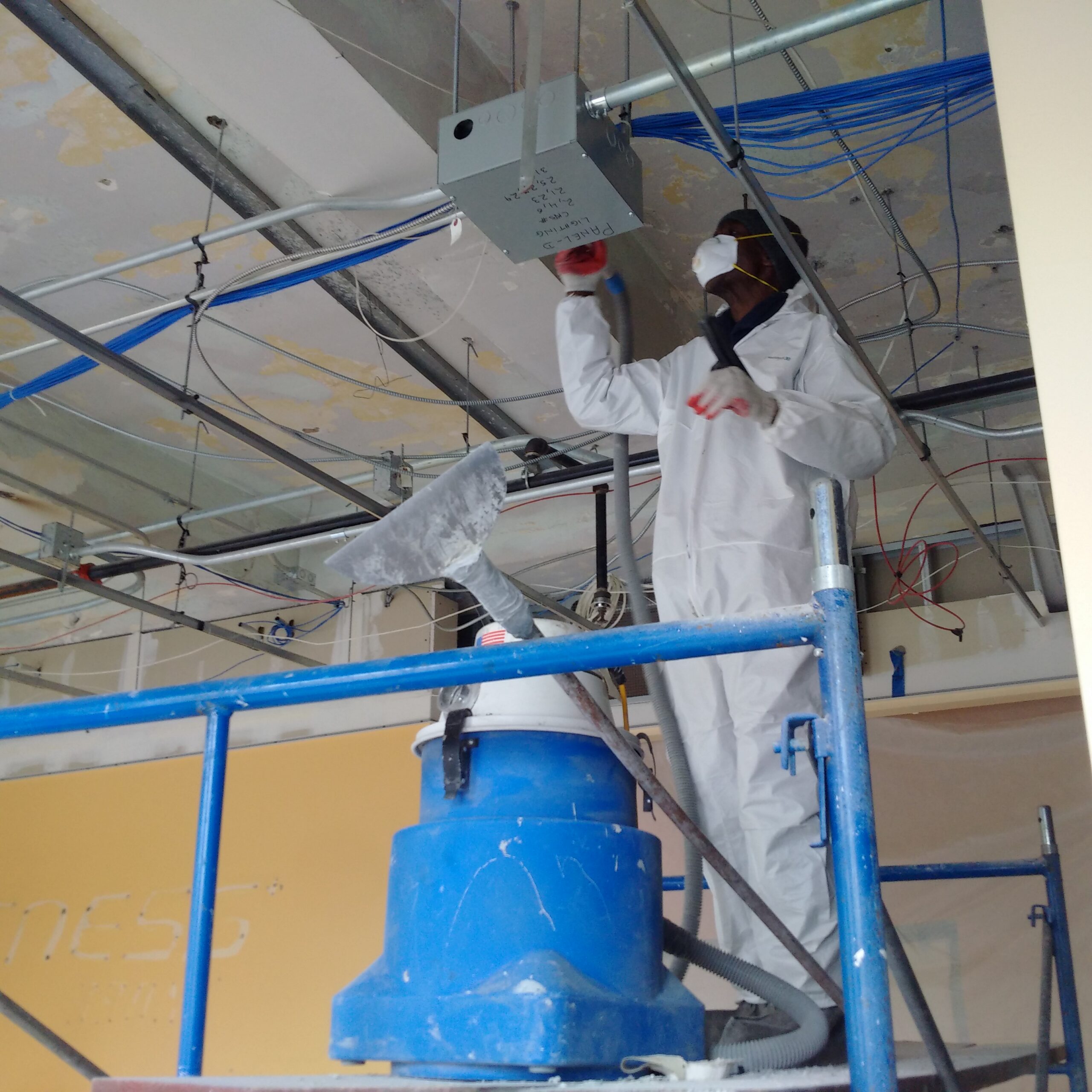Important Tools and Techniques for Reliable Lead Infraction Clean-up
Attending to lead infractions successfully requires an extensive technique that mixes the right tools with tactical approaches. The first action entails outfitting employees with Individual Protective Equipment (PPE) to guard their wellness. Concurrently, the use of specialized cleaning tools, such as HEPA vacuums and lead-specific cleaning agents, is vital for complete impurity removal. Effective control techniques, including plastic bed linen and unfavorable air stress systems, are necessary to prevent the spread of hazardous products. Risk-free disposal practices and rigorous adherence to governing guidelines make certain responsible handling of harmful waste. What are the nuanced methods that absolutely make a difference?
Individual Protective Devices
Individual protective devices (PPE) is a critical component in the efficient monitoring of lead contamination cleaning. PPE functions as an important obstacle, guarding employees from the hazardous effects of lead exposure, which can lead to serious wellness repercussions. The essential PPE for lead cleanup includes respirators, protective clothes, gloves, and eye security. Each kind of tools is especially made to minimize various threats linked with lead bits and dirt.
Respirators, especially those furnished with HEPA filters, are crucial for filtering system airborne lead particles, preventing breathing. Correct fit and seal checks are crucial to guarantee their performance. Safety clothes, including coveralls and non reusable matches, protects against lead dirt from adhering to employees' garments, decreasing the risk of second contamination. Handwear covers, usually constructed from nitrile or latex, protect the skin from direct call with lead, while security goggles or full-face shields shield the eyes from dust and debris.
Furthermore, strenuous training on the appropriate use and maintenance of PPE is essential. Workers must be enlightened on donning and doffing treatments to stay clear of contamination. Routine inspections and substitutes of PPE components are needed to keep their protective capacities, making sure a safe and certified cleaning operation.
Specialized Clean-up Devices

An additional important device is the wet/dry vacuum, which can properly cleanse up both dust and liquid impurities. These vacuum cleaners typically include HEPA filters to provide an extra layer of security. Damp wipes or tack cloths are likewise critical for surface area cleansing; they are specifically developed to record and hold lead fragments, decreasing the danger of spreading out contamination.
For more persistent down payments, specialized lead-removal cleaner are required. These agents are developed to break down lead fragments, making them easier to eliminate. Scrub brushes with strong bristles can help in this procedure, specifically on harsh surface areas where lead dust has a tendency to adhere a lot more highly.
Furthermore, encapsulants are made use of to secure lead-contaminated surface areas, protecting against the release of lead dirt. These specialized paints and coatings are developed to adhere to various substrates, providing a long-lasting solution for lead containment.
Effective Control Techniques
Reliable control methods are essential in reducing the spread of lead contamination during cleaning activities. Implementing durable containment approaches makes certain that lead bits do not migrate to untouched areas, thereby securing both workers and the setting (DOH & HPD Lead Violation Removal NYC).

To enhance control, encapsulants can be applied to surface areas that are not being eliminated or disturbed. These specialized layers bind lead dirt, reducing its schedule for resuspension. Furthermore, all personnel have to put on appropriate Individual Protective Devices (PPE), consisting of respirators and disposable matches, to stop contamination spread.
Safe Disposal Practices
Guaranteeing secure disposal practices is a critical element in the monitoring of lead contamination click over here cleaning. Proper disposal alleviates the risk of lead returning to the setting and endangering public wellness. The initial step is to recognize and set apart lead-contaminated waste from other materials. Protected control using sturdy, watertight containers is important to prevent spillage throughout transportation.
Transporting lead waste needs adherence to stringent standards. Making use of certified unsafe waste carriers ensures that the materials are dealt with properly. Paperwork, consisting of shows up detailing the type and amount of waste, need to come with deliveries to track the waste from the website of beginning to its last disposal destination.
Designated harmful waste disposal facilities are equipped to handle lead-contaminated materials safely. These centers often use innovative approaches such as stablizing, solidification, or chemical therapy to reduce the effects of the lead prior to disposal. Landfilling in specialized, lined areas that avoid leachate from polluting groundwater is a typical method for final disposal.
Regular training for personnel associated with lead garbage disposal is vital to preserve safety and security requirements and protect against accidental exposure. By adhering to these techniques, organizations can significantly reduce the ecological and health and wellness effects connected with lead contamination.
Regulatory Conformity Tips

Complying with regulative compliance is extremely important in the effective execution of lead contamination cleanup. Understanding and adhering to federal, state, and neighborhood laws guarantees not just the security and health of people yet additionally the legal and economic well-being of the cleaning company. The Epa (EPA) establishes strict criteria, such as the Lead Restoration, Repair, and Paint (RRP) Rule, which mandates correct certification see and training for specialists handling lead-based activities.
Conformity begins with a thorough analysis of suitable regulations and policies. Organizations must remain upgraded on any type of legislative changes, which can be helped with via normal training sessions and subscribing to market updates. Paperwork is another essential conformity aspect; preserving in-depth documents of all tasks, consisting of inspection reports, worker training logs, and disposal manifests, is vital.
Additionally, involving with accredited lead examiners or run the risk of assessors makes certain that lead threats are properly identified and reduced. Employers should impose sites making use of Personal Protective Tools (PPE) and make certain that safety and security methods are purely complied with. Transparent interaction with stakeholders, consisting of workers, clients, and governing bodies, will certainly promote a culture of conformity and responsibility, ultimately adding to a more secure and much more efficient lead cleaning process.
Verdict
Reliable lead offense clean-up necessitates the assimilation of specialized devices and tactical techniques to make certain safety and security and effectiveness. Utilizing HEPA vacuum cleaners, specialized cleaning up representatives, and efficient control approaches such as plastic bed linen and negative air stress systems is critical. Personal safety tools (PPE) safeguards employees from exposure, while safe disposal practices and rigorous adherence to governing conformity are essential for sensibly managing dangerous waste. Collectively, these procedures significantly alleviate health dangers and add to a cleaner atmosphere.